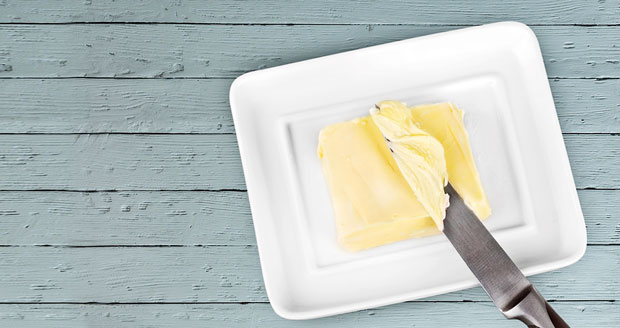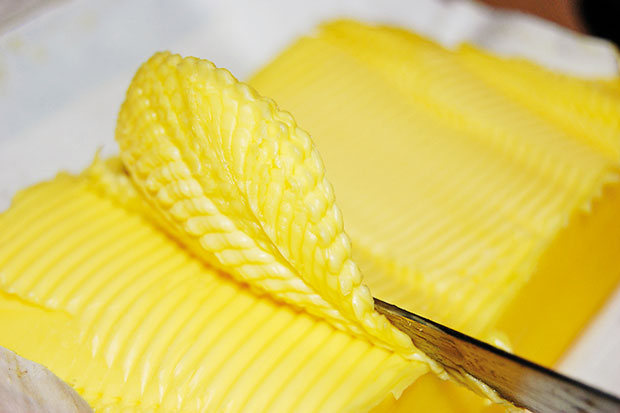28 Jun 2017 - {{hitsCtrl.values.hits}}

 It is a must in our day-to-day cooking and baking. The moistener that most can’t imagine a slice of bread without. Whatever you choose, butter or margarine are not items that one easily forgets when shopping for essential groceries.
It is a must in our day-to-day cooking and baking. The moistener that most can’t imagine a slice of bread without. Whatever you choose, butter or margarine are not items that one easily forgets when shopping for essential groceries.
If butter scores points for taste and margarine for health, then what does fat spread do? Have you felt conflicted and confused if you should choose butter or switch to margarine or another spread? This week, Health Capsule brings you the answers to your melting questions.
Butter has been the culinary sweetheart around the world, as it is one of the most highly concentrated forms of fluid milk. Twenty litres of whole milk are needed to produce one kilogram of butter. But over the years, the sacred culinary product has come under great scrutiny, owing to research findings linked with risks of heart disease. Ever since these findings, a fierce debate has raged on among experts debating the amount of saturated fats contained in butter.
Then came margarine to the rescue. Margarine, a butter substitute made originally from animal fats but now made exclusively from vegetable oils, was seen as the alternative. As nutritionists pointed to the heart-healthy option, margarine was a healthy family’s new best friend. However, research on the high levels of trans-fats packed in margarine shed light on doubled risk for heart health, which left many in limbo.
Along came the fat spread, promising to champion heart health. It looked like margarine, it tasted like margarine. But it was not margarine. Home-bakers found out to their dismay that the rebranding of the popular margarine they used for their cakes was actually the reason that their delicacies didn’t turn out quite right. While most Sri Lankan consumers were baffled with the health risks, almost all margarines were re-labelled or reformulated into ‘fat spreads’.

Butter vs Margarine
The type of fat found in butter and margarine is what makes these two products different from each other. Margarine contains plant-based fats while butter is made from dairy fat. “The main source of fat in butter would be milk fat which is high in saturated fats. In margarine, the main source of fat will be vegetable fat which can be either high in saturated or unsaturated fatty acids,” Registered Dietitian and Nutritionist Nilushi Mudalige said speaking to Health Capsule.
According to Mudalige, given the choice of butter and margarine, the latter emerges as the healthier option. “Margarines are healthier than butter, but it has to be a soft margarine. Fat spreads or margarines made out of canola oil, sunflower oil or olive oil are generally recommended,” she said.
How to identify good margarines?
“Based on the type of vegetable oil that is used to prepare margarine, you can identify them as healthy or unhealthy varieties. How an average person can identify this is by looking at the texture of the margarine in refrigerated temperature. The test is as simple as putting your margarine in the refrigerator. After a while if the margarine is in soft form, it is considered to be healthy. If it has hardened, that means it contains comparatively more unhealthy fat which can increase your bad cholesterol in blood and the risk for cardio vascular diseases ” Mudalige explained.
Fat spreads vs margarine
Fat spreads and margarines are both made of vegetable fats. Yet there is a difference in the composition. “Margarine is about 80% fat and 20% water, whereas fat spreads are the opposite, containing more water. You can find 80% water in fat spreads with only about 20% fat.” Mudalige opined. Asked if there was a regulation on the amount of vegetable oils or fat percentage that could go into a fat spread, the expert nutritionist said professionals favour identifying healthy and unhealthy products and advice consumers accordingly.
Healthier option
According to Harvard Health Publications, there has never been any proper evidence that using margarine instead of butter can cut the chances of a heart attack or the development of a heart disease. From the standpoint of heart disease, butter is on the list of foods to use sparingly mostly because it is high in saturated fat, which aggressively increases levels of bad cholesterol.
According to nutritionists, a quick comparison of the health value of spreads (including butter and margarine) simply by looking at the nutrition labels on these products, is enough to keep you well informed. No matter what type of spread you butter your toast with, your goal should be to limit the intake of saturated fats and to avoid trans fats altogether.
23 Dec 2024 9 hours ago
23 Dec 2024 23 Dec 2024
23 Dec 2024 23 Dec 2024
23 Dec 2024 23 Dec 2024